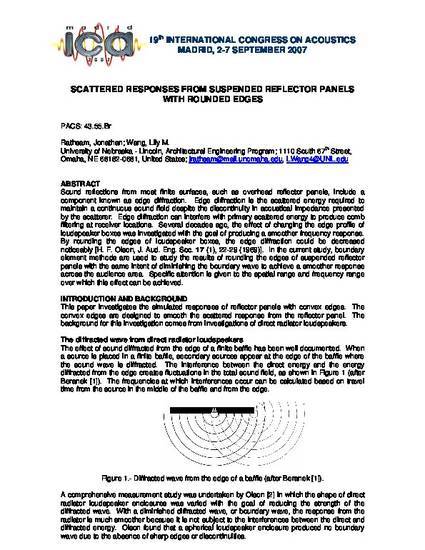
19th INTERNATIONAL CONGRESS ON ACOUSTICS MADRID, 2-7 SEPTEMBER 2007.
Sound reflections from most finite surfaces, such as overhead reflector panels, include a component known as edge diffraction. Edge diffraction is the scattered energy required to maintain a continuous sound field despite the discontinuity in acoustical impedance presented by the scatterer. Edge diffraction can interfere with primary scattered energy to produce comb filtering at receiver locations. Several decades ago, the effect of changing the edge profile of loudspeaker boxes was investigated with the goal of producing a smoother frequency response. By rounding the edges of loudspeaker boxes, the edge diffraction could be decreased noticeably [H. F. Olson, J. Aud. Eng. Soc. 17 (1), 22-29 (1969)]. In the current study, boundary element methods are used to study the results of rounding the edges of suspended reflector panels with the same intent of diminishing the boundary wave to achieve a smoother response across the audience area. Specific attention is given to the spatial range and frequency range over which this effect can be achieved.
Available at: http://works.bepress.com/lilymwang/24/

Copyright IEEE 2007. Used by permission